Dr. Chadi El Mohtar, Ph.D.
Pore fluid engineering geotechnics
Professor El Mohtar’s research focuses on pore fluid engineering geotechnics to develop auto-adaptive solutions for mitigating geo-challenges to existing and future infrastructures. His research involves engineering pore fluids and soils for the resilient response to adverse and unforeseen loading conditions, with minimal compromise to the performance under normal working loads. Particularly, his work has focused on advancing the fundamental understanding of viscous flow within porous media through relating rheological properties of fluids and suspensions to the mechanical and hydraulic characteristics of geomaterials. Over the course of his research career, he expanded his work on pore fluid-soil micro-mechanics from ground improvement contexts to include mobilization of non-aqueous fluids within porous media in geo-environmental and petroleum engineering applications. As such, his research integrates the areas of rheology, deep-bed filtration, geotechnical, geo-environmental and petroleum engineering to better understand the progressive temporal and space variations during and post flow of complex fluids in porous media.
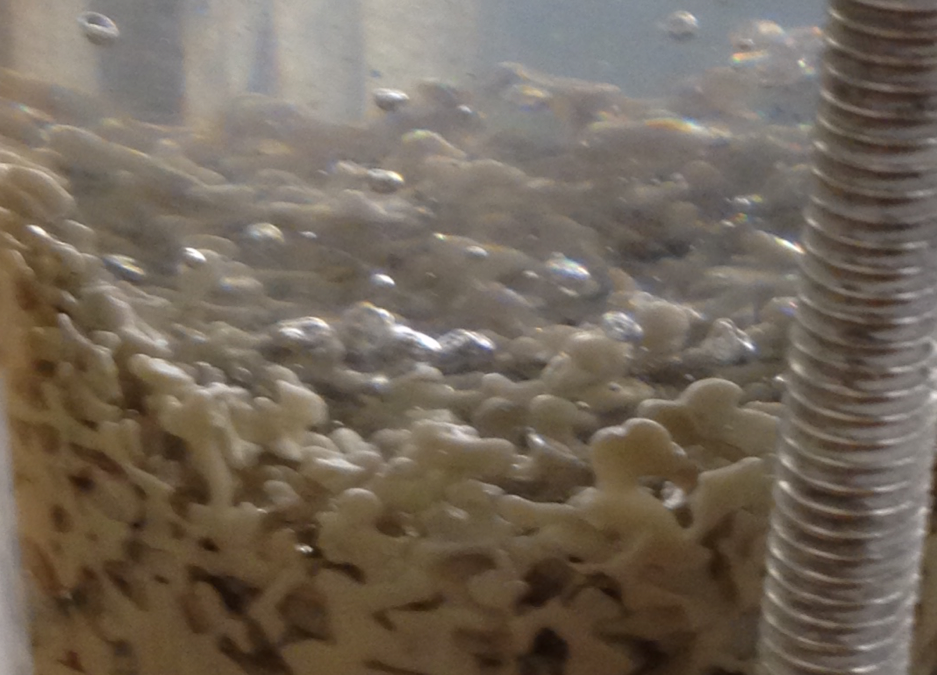
For additional information:
http://www.caee.utexas.edu/prof/El_Mohtar/
Dr. Robert Gilbert, Ph.D., P.E.
Model testing of axially loaded flowlines
In-field flowlines and export pipelines can experience expansion due to thermal heating and internal pressures. Pipeline expansion can lead to buckling and axial/lateral movements (also known as pipeline walking). The soil the pipelines rest on or are embedded within resist the axial and lateral movements. The objective of this research is to understand the pipe-soil interaction mechanisms and determine the axial resistance Gulf of Mexico clay can provide under monotonic and cyclical loading. Model pipelines, made of a similar polymer as used for flowline coating, are embedded in a testbed consisting of high-plasticity marine clay obtained from the Gulf of Mexico and then pulled axially to determine the peak and residual friction coefficients. These tests are also compared to tilt table tests performed with the same composite Gulf of Mexico clay and polymeric sheet.
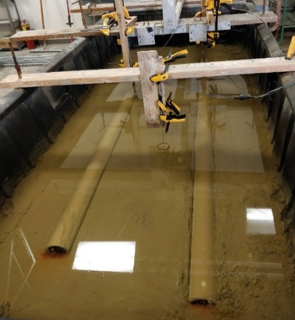
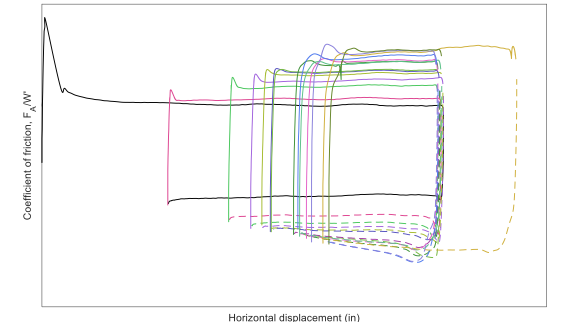
Dr. Krishna Kumar, Ph.D.
Multi-scale multiphase modeling of submarine landslides
The central theme of this project is understanding the runout behavior of submarine landslides and the impact it has on off-shore structures. A multi-scale approach is adopted to understand the interplay between different mechanisms such as hydroplaning, lubrication, and viscous-drag, on the run-out evolution. The Lattice-Boltzmann technique coupled with the Discrete-Element method is used to model the grain-scale interactions, while the geo-scale simulation of the landslide is performed using the Material Point Method. The main challenge is determining how to upscale the complex grain-scale interactions to the continuum model.
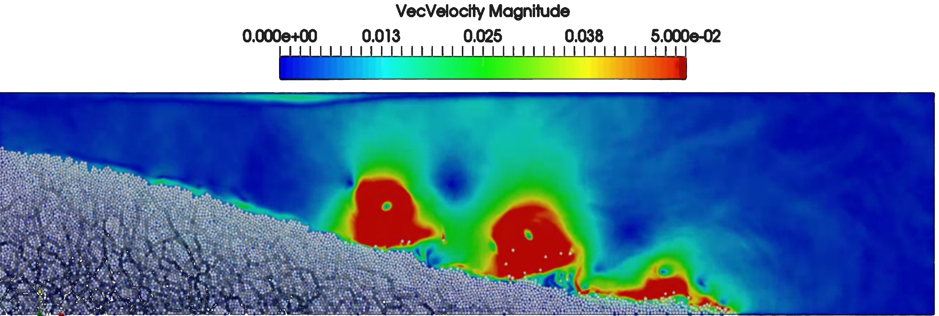 LBM-DEM simulation of an underwater granular column collapse with 50 million fluid nodes and 7000 DEM grains.
LBM-DEM simulation of an underwater granular column collapse with 50 million fluid nodes and 7000 DEM grains.For additional information:
Ellen M. Rathje, Ph.D., P.E., F.ASCE
Advances in site response analysis to improve predictions for design-level ground motions
One dimensional (1D) site response analysis is one of the most commonly performed types of analysis in geotechnical earthquake engineering, yet some recent studies have suggested that surprisingly few sites are modeled well by 1D analysis. This research utilizes ground motions from a large number of downhole arrays to evaluate the accuracy of 1D site response analysis over a wide range of ground motion levels. Low-intensity motions are being utilized to assess the accuracy of 1D analysis at small-strains, and an approach is being developed that incorporates the horizontal to the vertical spectral ratio (HVSR) to identify, apriori, sites that can be modeled well by 1D analysis. Moderate to large intensity motions are being used to assess 1D site response analysis at the larger strain levels that are often associated with design ground motions and have the potential to overdamp high frequencies. Various solutions are being investigated that can correct for this effect: a strength correction applied to the modulus reduction curve, scaling of the high-frequency spectral decay parameter (κ) and an equivalent-linear analysis that incorporates frequency-dependent soil properties (EQL-FD) based on the frequency-dependence of the induced shear strains. These improvements are being implemented in the Strata site response program.
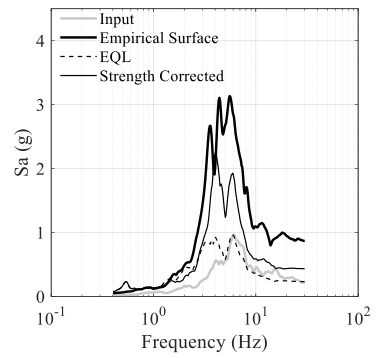
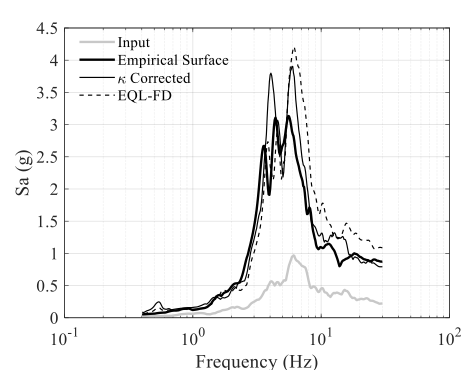
For additional information:
Tao, Y. and Rathje, E. (2019): https://doi.org/10.1061/(ASCE)GT.1943-5606.0002048.
Xu, B. and Rathje, E. (2018): https://doi.org/10.1061/9780784481462.045
Kottke, A. (2018): Strata v0.6.3 http://doi.org/10.5281/zenodo.1476717
Jorge G. Zornberg, Ph.D., P.E., F.ASCE
Evaluation of soil-geogrid Interaction using transparent soil: Implications in the design of geosynthetic-stabilized roadways
The design of reinforced soil retaining structures and of geosynthetic-stabilized roadways requires proper evaluation of the load-transfer mechanisms between soil and geosynthetics. In the case of geogrids, the passive resistance mobilized on transverse ribs defines the mechanical response for both: (1) the ultimate pullout strength, and (2) the in-plane stiffness of the reinforced system. In this research, a new experimental testing approach, involving the use of the “transparent” soil is conducted to visualize the load transfer mechanisms. High-definition cameras are utilized to track the movement of junctions and deflections in the ribs, allowing quantification of load transfer mechanisms. In addition, special laser techniques allow visualization of individual soil particle movements. The collected data provides insight into the relevance of different load transfer mechanisms, particularly under small displacements, which is particularly relevant for the design of geosynthetic-stabilized roadways.
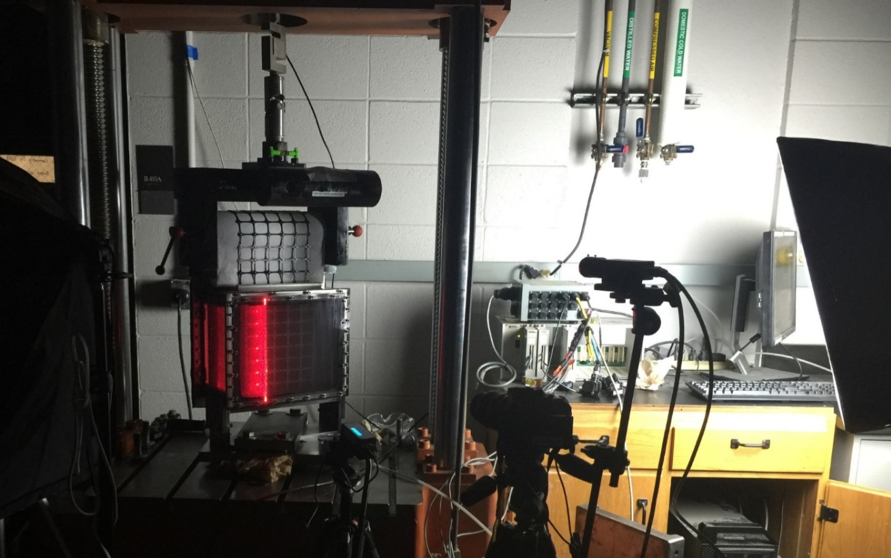 View of the soil-geosynthetic interaction equipment involving “transparent” soil and laser techniques. This allows visualization of both geosynthetic deflections and individual soil particle movements.
View of the soil-geosynthetic interaction equipment involving “transparent” soil and laser techniques. This allows visualization of both geosynthetic deflections and individual soil particle movements.For additional information:
http://www.caee.utexas.edu/prof/zornberg/
https://youtu.be/Q_ONiywDxGI







